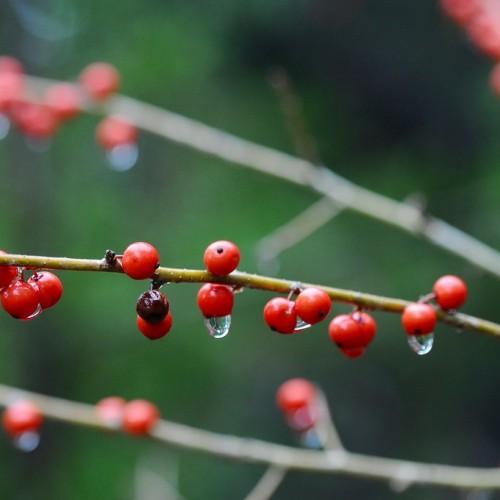
possumhaw
Ilex decidua 'Warren's Red'
Cycle:
Perennial
Watering:
Average
Hardiness Zone:
5 - 9
Flowers:
Flowers In Spring
Sun:
Full sun,part shade
Fruits:
Fruits Ready In Fall
Leaf:
Yes
Growth Rate:
Low
Maintenance:
Low
Drought Tolerant:
Yes
Salt Tolerant:
Yes
Thorny:
Yes
Care Level:
Moderate
watering
Possumhaw (Ilex decidua 'Warren's Red') should be watered when the top inch of soil is dry. It is best to water deeply, providing enough water to moisten the entire root zone and allow some excess to drain out. During the summer months, the plant may need to be watered every 5-7 days; however, during winter months, the watering frequency should be decreased to around every 10-14 days. If the soil has stayed dry for extended periods of time, then a deep watering session of up to 1-2 inches is recommended. Make sure to adjust the frequency of watering according to the soil condition and local climate.
sunlight
Possumhaw (Ilex decidua 'Warren's Red') will generally do best with about 6 to 8 hours of direct sunlight per day. Early morning to mid-afternoon is the ideal time frame for sunlight exposure. Too much heat during the peak hours of the day can be detrimental to the plant and cause foliage to burn. Too little sunlight can cause a lack of flowering and fruit production. This sunrise-to-sunset period of sun can provide bright indirect light for the remainder of the day to sustain and nurture the Possumhaw. Providing the plant with enough climate-controlled sunlight during the day will keep it looking healthy and producing beautiful flowers and attractive fruits.
pruning
Pruning for possumhaw (Ilex decidua 'Warren's Red') should be done regularly to maintain the desired shape and reduce diseases and pests. Pruning should take place in late winter or early spring, when the plant is dormant. Generally, only dead or broken branches should be removed, with light pruning of young twigs and light thinning of interior branches. Removal of more than 1-third of the existing canopy in a single season is not recommended, as this can cause shock to the plant.
